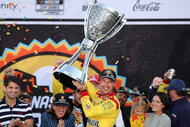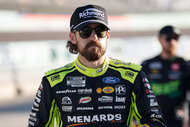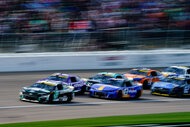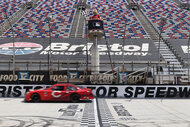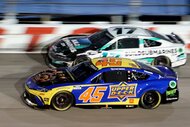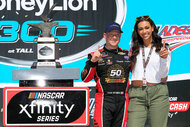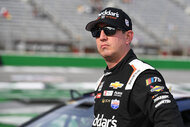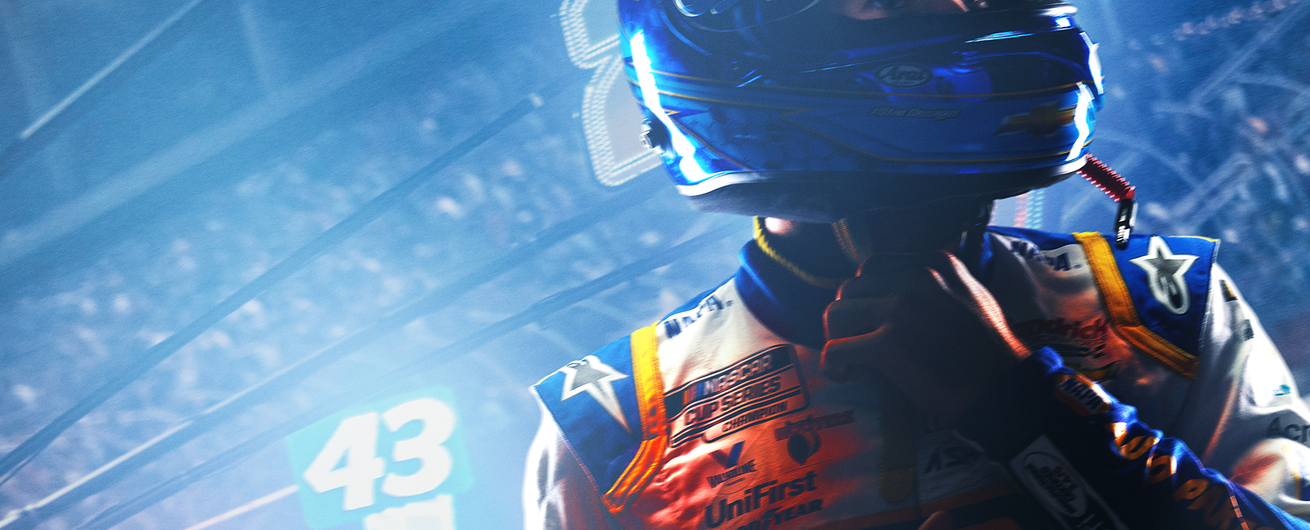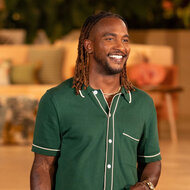Create a free profile to get unlimited access to exclusive show news, updates, and more!
Kyle Larson "Very Happy" With NASCAR's Quick Response To Scary Talladega Crash
The 2021 Cup Series winner was in a nearly catastrophic wreck with Ryan Preece, triggering the league to take swift action.
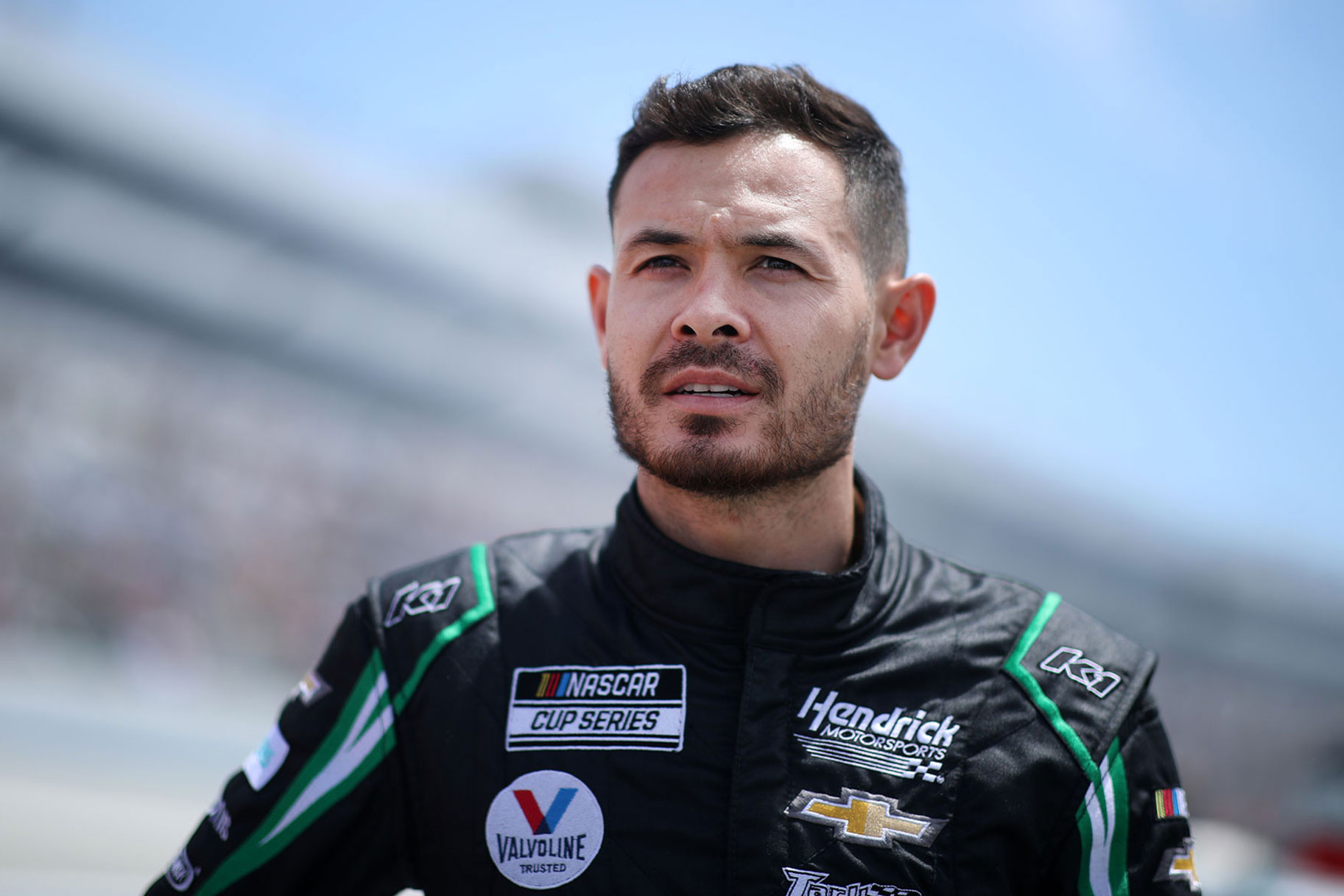
Part of what makes the sport of NASCAR so intoxicating for its fans is the tightrope drivers walk each and every time they get behind the wheel. Pushing the limits on a race track at 200 miles per hour is inherently dangerous, so when there’s room to make safety improvements, the league will go to great lengths to do so – something Kyle Larson is commending NASCAR for doing in the wake of his harrowing wreck at Talladega Superspeedway with his fellow Cup Series competitor Ryan Preece.
What caused Kyle Larson’s wreck with Ryan Preece at Talladega?
Sitting in third place at the Geico 500 on April 23, Trackhouse Racing’s Noah Gragson, but the 24-year-old Legacy Motor Club driver held his ground against the notoriously aggressive Watermelon Man. Losing control from Chastain’s maneuver, Gragson’s No. 42 Camaro wobbled and clipped Chastain before impacting the wall. Meanwhile, Larson in the No. 5 Chevy veered down into the track infield before whipping back around into the middle of the pack of oncoming cars. That’s when Preece in the No. 41 Ford Mustang smashed into Larson’s passenger side panel, completely destroying Yung Money’s ride.
RELATED: Bubba Wallace Shares Michael Jordan's Advice for Dishing Out Payback on the Track
What did Larson and Preece say about their wreck?
Following the ordeal, Larson spoke after the race about miraculously surviving the violent collision with no serious injury.
"Thankfully, I'm okay," Larson revealed at the time, according to Motorsport.com. "My car is absolutely destroyed. The cockpit is a mess. Just thankful that I'm alright and all that, but just a bummer. We put ourselves in position once again on a superspeedway, and the end results don't show it. Another wreck not of my doing on a superspeedway. Just hate it, but we'll keep getting better and eventually, it'll have to work out.”
Preece was equally shaken up by the severity of crash.
"That was P1 for hits I've ever taken in my life," Preece told reporters. "I feel like when I wreck, I'm pretty tough and usually not a lot of stuff you think, 'Man, that hurt.' Definitely P1 on the hit list… Picture someone throwing you on the ground as hard as you can, though. You know, I mean, it doesn't feel good."
Speaking to the AP News after the wreck, Larson praised the league for understanding that it had to immediately address the issue.
“They’ve [NASCAR] worked really hard with this car to make it safer,” said Larson. “I’ve been very thankful they took both my car and Preece’s car afterward to dive in deeper into it and see how they can make it safer yet.”
What steps has NASCAR taken to improve driver safety?
Set to debut July 9 at Atlanta Motor Speedway during the Quaker State 400, NASCAR announced on June 8 that it is making significant safety updates to the Next Gen car, following the wreck between Larson and Preece in which the roll bars of the No. 5 were damaged. The entire front side of Larson’s car was crumpled into a mangled mess, leaving his cockpit dangerously exposed.
Dr. John Patalak, managing director of safety and engineering for NASCAR, reviewed the league’s process with Todd Gordon of “Inside the Race,” explaining what steps NASCAR took to examine the incident in excruciating detail, and how it is devising targeted plans to enhance driver safety precautions.
“Following that crash, we brought both cars back to the research and development center here to really slowly go through them,” Dr. Patalak revealed. “We actually had teams and drivers her with us to get their impressions of the crash. So, we took the cars apart ... working our way in to see what effect the crash had on the chassis, how they performed, and we also have a lot of data that comes out of the car.”
“We have our crash data, we have GPS and telemetry data and we looked at all of that to reconstruct the actual crash to come up with the offset, the speed, the angle, so that we could learn more and test solutions for improvements,” added Dr. Patalak. “We really have to put it all together to tell the story of exactly what happened, so we can test improvement against it.”
What did Larson say about NASCAR’s steps to improve driver safety?
The 30-year-old native of Elk Grove, California reflected on his horrific ordeal ahead of this past weekend’s Cup Series event in Sonoma (Martin Truex Jr. would go on to win the Sonoma-based race for the fourth time in his career). Though he applauded NASCAR for taking swift action, Larson made sure to avoid any comments on the technical safety elements improved in the Next Gen car.
“Yeah, I mean not an engineer, so I don’t know,” stated Larson in a presser for the Toyota / Save Mart 350. “I can’t look at it and really give you an opinion on how well they did with the changes or whatnot, but I am very happy that me being in that wreck at Talladega and seeing how close it got to being really bad – seeing them go straight into action, and compile data and make quick moves on improving the safety, it was something I was happy to see.”
What did Kyle Busch say about NASCAR improving driver safety in the Next Gen car?
The ambiguity surrounding what the specific changes are still has many scratching their heads about NASCAR’s plans. Never one to shy away from vocalizing his opinion, two-time Cup Series champion Kyle Busch weighed in on NASCAR’s long-term strategy for protecting drivers in the Next Gen car, questioning the tradeoff if increasing the weight of the Cup car might impede its overall speed and handling.
“The safety advances of the car and things like that – that’s all great, right?” Rowdy said in a Sonoma presser. “We needed to withstand big hits and hits like that and whatnot, but I feel like we keep adding material and keep adding material and keep making these things heavier. We used to run 3,400-pound cars, and now we’re at 3,600-pound cars, so what’s the limit? What’s the level of how heavy is too heavy?”
Armed with knowledge he gained from discussing the matter with engineers, Busch offered some of his own insights, noting that certain parts of the cars are far too rigid which, in turn, eliminates vital crush zones that older Cup car models had. The zones’ absence is what Busch believes to have caused Larson’s bars to break. This problem continues to exist, he says, because no prior measures were taken to address it in the new Next Gen cars. Instead of allowing for the frame to flex in soft sports, added stiffeners, he says, only increase the car’s weight and rigidity.
“I’m not a genius,” noted Busch as he finished his argument, “But at some point, we all have to reimagine some things.”


